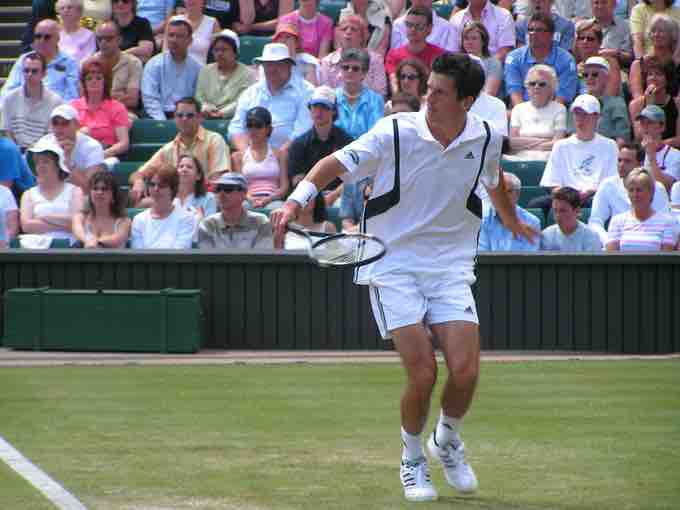According to Wolff's law, bone in a healthy person or animal will adapt to the loads it is placed under. If loading on a particular bone increases, the bone will remodel itself and have time to become stronger to resist that sort of loading. The internal architecture of the trabeculae undergoes adaptive changes, followed by secondary changes to the external cortical portion of the bone, perhaps becoming thicker as a result. The opposite is true as well. If the loading on a bone decreases, the bone will become weaker due to turnover. It is less metabolically costly to maintain and there is no stimulus for continued remodeling that is required to maintain bone mass .

NASA Shuttle Astronaut
Astronauts who spend a long time in space will often return to earth with weaker bones, since gravity hasn't been exerting a load on their bones. Their bodies have reabsorbed much of the mineral that was previously in their bones.
Muscle forces are a strong determinant of bone structure, particularly during the process of growth and development. The gender divergence in the bone-muscle relationship becomes strongly evident during adolescence. In females, growth is characterized by increased estrogen levels and increased mass and strength of bone relative to that of muscle; whereas in men, increases in testosterone fuel large increases in muscle, resulting in muscle forces that coincide with a large growth in bone dimensions and strength . In adulthood, significant age-related losses are observed for both bone and muscle tissues. A large decrease in estrogen levels in women appears to diminish the skeleton's responsiveness to exercise more than in men. In contrast, the aging of the muscle-bone axis in men is a function of age related declines in both hormones. In addition to the well-known age-related changes in the mechanical loading of bone by muscle, newer studies appear to provide evidence of age and gender-related variations in molecular signaling between bone and muscle that are independent of purely mechanical interactions. In summary, gender differences in the acquisition and age-related loss in bone and muscle tissues may be important for developing gender-specific strategies for using exercise to reduce bone loss with aging.

Tim Henman performs a backhand volley at the Wimbledon tournament in 2004.
The racquet-holding arm bones of tennis players become much stronger than those of the other arm. Their bodies have strengthened the bones in their racquet-holding arm since it is routinely placed under higher than normal stresses.
Simple aerobic exercises like walking, jogging, and running could provide an important role in maintaining and/or increasing bone density in women. Walking is an inexpensive, practical exercise associated with low injury rates and demonstrates high acceptability by elderly. For these reasons, walking could be an appropriate approach to prevent osteoporosis and maintain bone mass.